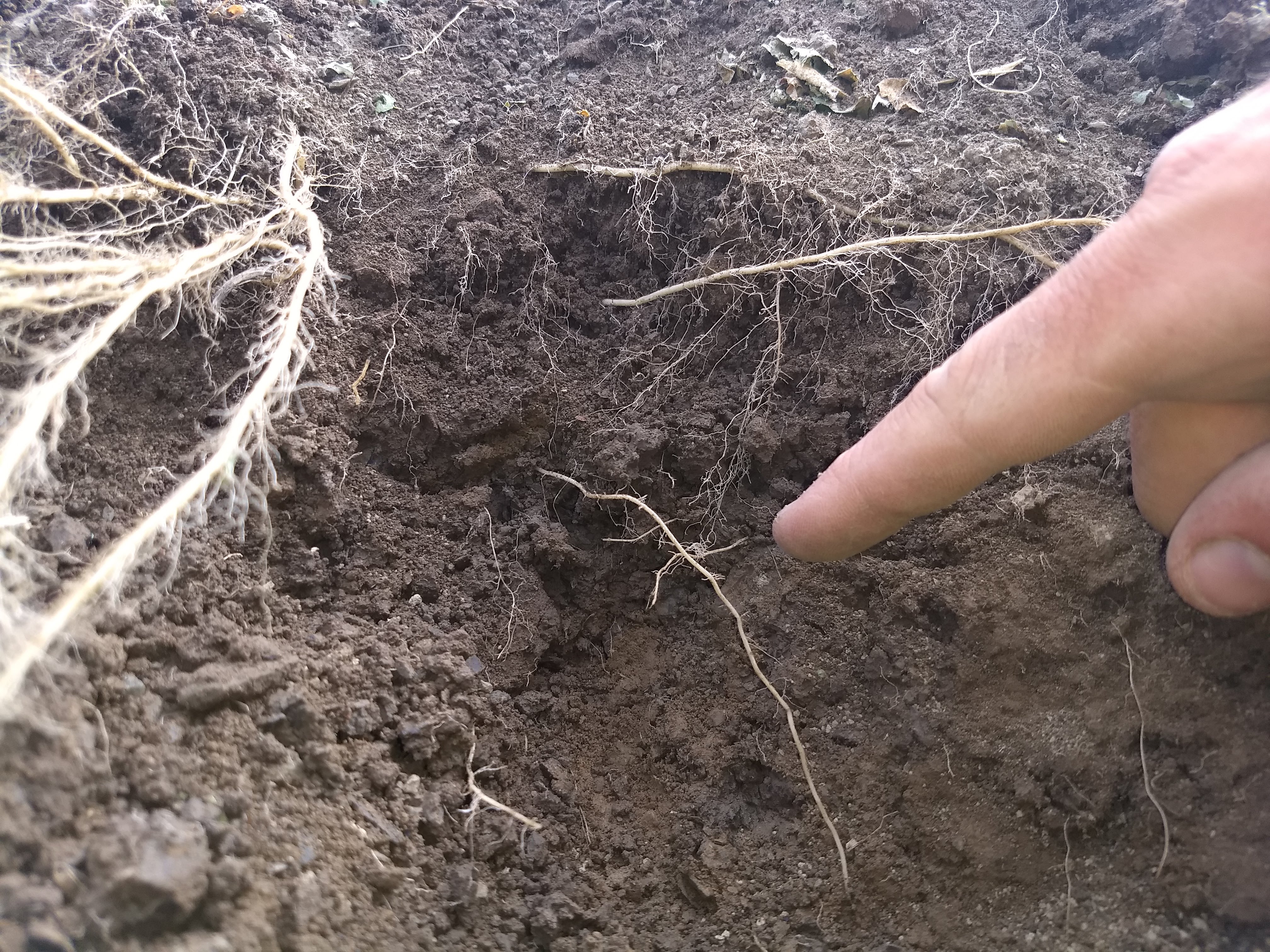One of my favorite activities when visiting farms is to dig a soil profile (and I’ve had the pleasure of digging profiles all over North America over the past 3 years of #van life. It’s wild how infrequently I did this on my own farm, and how few farmers dig soil profiles to check out their crop’s roots.
Our first reflex when observing a less than optimal crop is to look at surface level stuff: insects, diseases, fertilization, irrigation. While all these are important things to consider, soil and root health are often overlooked and can often be the root cause of the problem (pun intended).

The idea is to dig a 12-16 inch deep cross-section trench the width of a bed, ideally in a standing crop or green manure. Once you have dug the hole, use a pocket knife to ‘refresh’ the edge by picking at it with the blade so as to see the actual soil condition and not only the smeared edge created by the shovel.
- Start by poking the soil with your knife, starting at the surface and working your way down. How hard is the soil? Do you notice any change in hardness? Can you identify the different tillage depths based on how hard the soil is?
- Pay attention to the roots. How deep do they go? Do you notice any roots that turn at a right angle and grow horizontally (an indication of compaction)? What color are the roots; white and healthy, or brown and necrosed? Is there any funkiness going on (such as nematode damage)? Is there a strong, identifiable taproot for crops where this would be expected?
- What evidence of biological activity do you see? How many earthworms and worm galleys are there? Is there undecomposed organic matter indicating anaerobic conditions and low biological activity? What does it smell like: sweet and earthy, or funky and anaerobic?
- At what depth is the water table? (Ideally, you won’t find the water table at 12-16 inches… but I’ve been surprised before!)
- We often assume our tillage operations are doing a good job, but it is so important to check it out for real. Dig a profile to check that your chisel, ripper, or subsoiler is actually doing what you think it is.

By getting to the root of the problem, we can make sure to take actions that actually have the greatest impact possible… there’s no point spending time and energy on (insert input name __________) if you’ve only got roots 3 or 4 inches deep!!
Now that you’ve ascertained that there’s a compaction issue, it’s time to do something about it! This means using some type of tillage equipment to do some deep tillage. Usually, this means working the soil 8 inches deep using a chisel plow or broadfork. If you have serious compaction or ‘plow pan’ issues, you may need to chisel deeper or use a subsoiler. The general idea is to work at a depth that is 1 inch deeper than the compacted zone. The rule of thumb for deciding on the spacing between chisel or subsoiler shanks is to have 1.5 to 2 times the tillage depth (if working 8 inches deep, shanks could be 12-16 inches apart).
Here’s a great document on the subject of subsoiling.
Above all… dig a soil profile to verify that your tillage is actually having the desired outcome!!
Similarly, it is so important to get to the root cause of any issue in our life.
The problem is rarely the problem. Be curious about what is really going on!
- The 5 ‘whys’: Asking and answering the question ‘why’ 5 times to get to the root cause of the problem (My profits are lower than anticipated, Why, Because market sales are 30% lower, Why, etc… 5 times);
- Listen for the emotional needs behind what people are saying… not just to the issue they are seemingly bringing to you;
- Be committed to reality. Are you more interested in your thoughts, beliefs, and opinions or are you more interested in seeing clearly what is present in this moment?
Go make a ruckus!